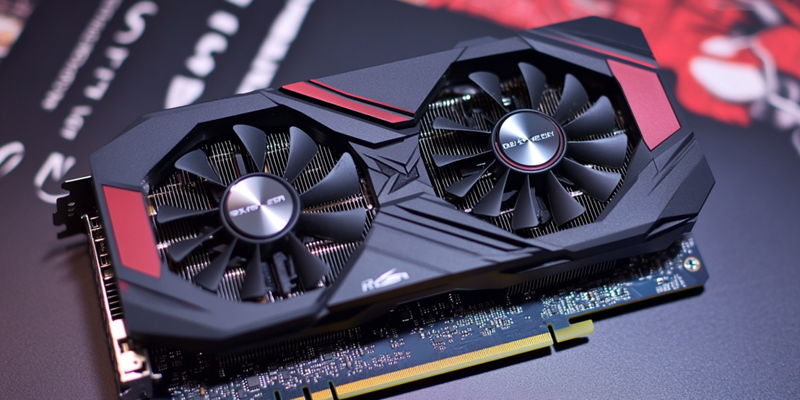In a surprising move, Taiwanese manufacturer Biostar has re-released the Radeon RX 580, a graphics card that originally launched in April 2017. Celebrated for its affordability and solid performance at 1080p resolution, the RX 580 quickly became a favorite among budget-conscious gamers. The decision to bring back an older model, especially one that is over half a decade old, raises several intriguing questions and observations. Why reintroduce such an antiquated GPU into today’s rapidly evolving technology market? Can an old workhorse like the RX 580 still meet the needs of modern gamers, particularly those on a budget? What external factors might be driving this unexpected move by Biostar?
Responding to Economic Inequality in the GPU Market
A major driving force behind the re-release of the RX 580 is the significant economic disparity permeating the current GPU market. While high-end graphics cards continue to push the boundaries of performance and innovation, they come with price tags that are prohibitive for a large segment of the consumer base. In an environment marked by economic constraints, the RX 580 emerges as a viable option for gamers looking to build or upgrade their PCs without draining their wallets. Its reintroduction comes at a time when many PC gamers are reconsidering their options to achieve a balance between cost and performance.
The economic context provides a solid rationale for Biostar’s seemingly perplexing decision. The demand for budget-friendly gaming solutions is showing no signs of waning. By re-releasing the RX 580, Biostar aims to target economically constrained gamers who still seek decent performance at a lower cost. This strategy dovetails neatly with AMD’s ongoing focus on more affordable, lower- to mid-range models, a strategic pivot that underscores the growing market for cost-effective yet competent hardware solutions.
Market Appeal of the Radeon RX 580
Despite being a six-year-old model, the Radeon RX 580 offers several features that make it an appealing option for budget gamers today. When the RX 580 first launched, it was lauded for its excellent 1080p gaming capabilities, a resolution that remains widely used among everyday gamers. The card was well-received for its ability to handle popular titles with ease, offering a satisfactory experience even in graphically intensive games. While it cannot compete with the modern GPUs in the realm of 4K gaming or support the latest ray-tracing technologies, its re-release can still serve those focused on 1080p gaming and playing older, less demanding games.
Priced around $100, the RX 580 provides a more affordable entry point into the gaming world compared to newer, high-end models that can easily run into the hundreds or thousands of dollars. The cost-benefit calculation seems reasonable for gamers who prioritize value and are less concerned about having the latest and greatest hardware. Nonetheless, it is important to recognize the limitations of this approach. AMD no longer includes the RX 580 in its main driver updates, meaning that while the card may still receive some sporadic support, it won’t benefit from the regular updates and optimizations available to newer models.
Trends in the Broader Hardware Market
The reintroduction of the RX 580 also reflects larger trends in the hardware industry, particularly the divergent strategies of major players like AMD and Nvidia. AMD has been making a conscious shift in focusing on AI and mid-range GPUs, understanding that there is significant demand for these products in both consumer and professional markets. On the other hand, Nvidia continues to pursue high-powered, cutting-edge GPUs such as the upcoming RTX 5080 and 5090 models. These strategies exemplify a market increasingly divided between high-cost, high-performance components and more accessible, budget-friendly options.
Christian Guyton, a computing editor with a keen interest in affordable hardware, sheds light on the apparent incongruity of re-launching an old GPU like the RX 580 amidst these trends. Guyton argues that there is merit in the move if it can make PC gaming more inclusive and accessible. His perspective aligns with a broader understanding that not every gamer seeks or needs top-tier performance. There exists a considerable market segment that values cost savings and decent performance, especially in economically challenging times.
A Broader Market Adaptation
The decision to re-launch the RX 580 underscores ongoing economic disparities and a clear market demand for practical, cost-effective hardware solutions. While the RX 580 may not be equipped for future-proof gaming or the latest technological advancements, it presents an attractive alternative for consumers seeking both affordability and adequate performance. This nuanced approach to product re-launches highlights how companies like Biostar are adapting to current economic conditions and consumer needs. Ultimately, Biostar’s re-release of the RX 580 serves as a pragmatic response to the broader context of the market and speaks to the challenges faced by consumers who are navigating an increasingly polarized hardware landscape.
The renewed availability of the RX 580 is expected to receive a favorable reception among budget-conscious gamers, indicating a continued appetite for affordable, decent-performing components. While the card might not offer the longevity or comprehensive support of newer models, its reintroduction is a vivid example of how economic conditions can influence market strategies. For gamers who prioritize budget over bleeding-edge performance, the RX 580 could very well be the right choice, capturing the delicate balance between cost and capability.

